Brunilde Sansò
Polytechnique Montréal
A Scalable Architecture for Future Regenerative Satellite Payloads
Jul 08, 2024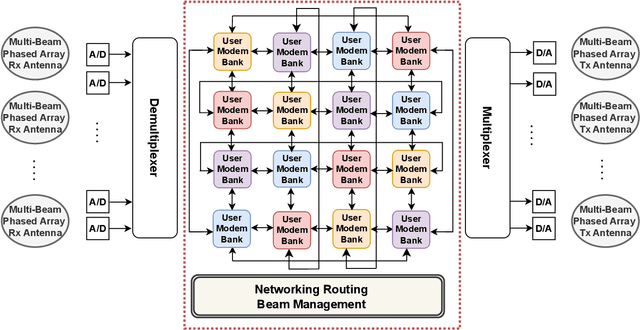
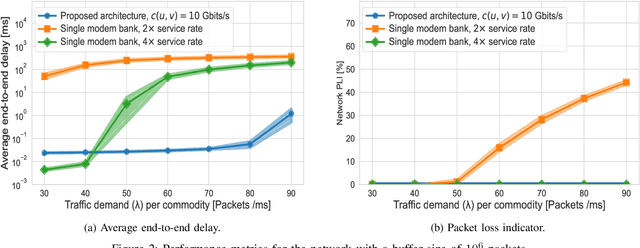
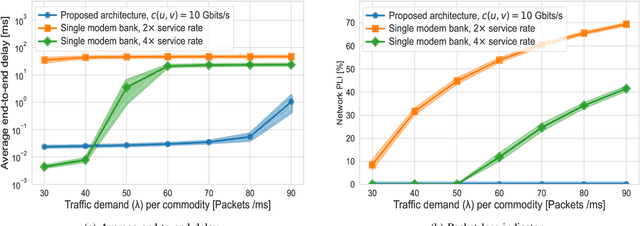
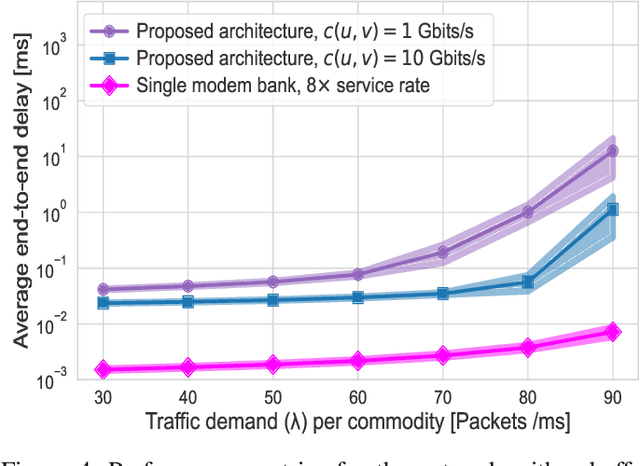
Abstract:This paper addresses the limitations of current satellite payload architectures, which are predominantly hardware-driven and lack the flexibility to adapt to increasing data demands and uneven traffic. To overcome these challenges, we present a novel architecture for future regenerative and programmable satellite payloads and utilize interconnected modem banks to promote higher scalability and flexibility. We formulate an optimization problem to efficiently manage traffic among these modem banks and balance the load. Additionally, we provide comparative numerical simulation results, considering end-to-end delay and packet loss analysis. The results illustrate that our proposed architecture maintains lower delays and packet loss even with higher traffic demands and smaller buffer sizes.
Evolution of High Throughput Satellite Systems: Vision, Requirements, and Key Technologies
Oct 06, 2023Abstract:High throughput satellites (HTS), with their digital payload technology, are expected to play a key role as enablers of the upcoming 6G networks. HTS are mainly designed to provide higher data rates and capacities. Fueled by technological advancements including beamforming, advanced modulation techniques, reconfigurable phased array technologies, and electronically steerable antennas, HTS have emerged as a fundamental component for future network generation. This paper offers a comprehensive state-of-the-art of HTS systems, with a focus on standardization, patents, channel multiple access techniques, routing, load balancing, and the role of software-defined networking (SDN). In addition, we provide a vision for next-satellite systems that we named as extremely-HTS (EHTS) toward autonomous satellites supported by the main requirements and key technologies expected for these systems. The EHTS system will be designed such that it maximizes spectrum reuse and data rates, and flexibly steers the capacity to satisfy user demand. We introduce a novel architecture for future regenerative payloads while summarizing the challenges imposed by this architecture.
Privacy-preserving classifiers recognize shared mobility behaviours from WiFi network imperfect data
Oct 24, 2018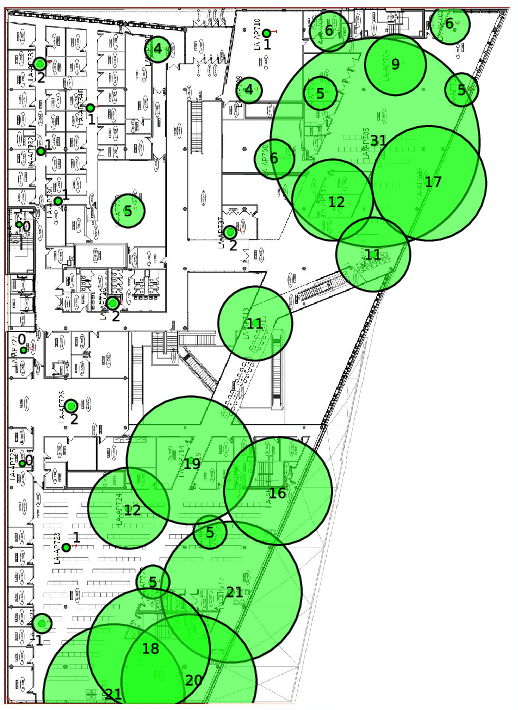

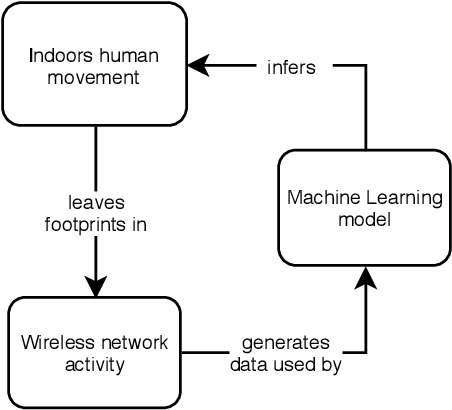
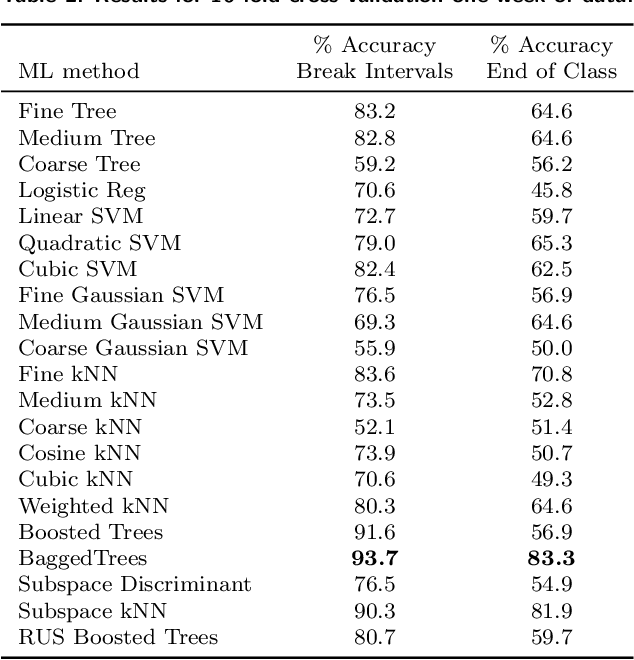
Abstract:This paper proves the concept that it is feasible to accurately recognize specific human mobility shared patterns, based solely on the connection logs between portable devices and WiFi Access Points (APs), while preserving user's privacy. We gathered data from the Eduroam WiFi network of Polytechnique Montreal, making omission of device tracking or physical layer data. The behaviors we chose to detect were the movements associated to the end of an academic class, and the patterns related to the small break periods between classes. Stringent conditions were self-imposed in our experiments. The data is known to have errors noise, and be susceptible to information loss. No countermeasures were adopted to mitigate any of these issues. Data pre-processing consists of basic statistics that were used in aggregating the data in time intervals. We obtained accuracy values of 93.7 % and 83.3 % (via Bagged Trees) when recognizing behaviour patterns of breaks between classes and end-of-classes, respectively.
 Add to Chrome
Add to Chrome Add to Firefox
Add to Firefox Add to Edge
Add to Edge